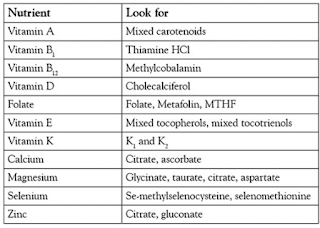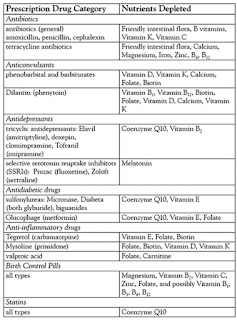Feed Your Cells Nutritional Superstars
A growing body of scientific research has revealed that many single nutrients,
herbs, and foods—the nutritional “superstars”—along with an Eating for Health
diet, provide substantial health benefits to slow and reverse dysglycemia and other
inflammatory disorders. While it’s possible to supplement any diet with fatty acids,
dietary fibers, and vitamins and minerals, we prefer to obtain as many of these
nutrients as possible from foods first, supplements second. Here are some
suggestions.
CHILE PEPPERS
Research conducted in Australia has shown that using chile peppers as a
flavorful addition to foods allows the body to produce less insulin to transport
glucose into cells, preventing an insulin overload (Ahuja et al. 2006). Chile peppers
not only lower the amount of insulin required to decrease after-meal blood-sugar
levels, but also result in a lower C-peptide/insulin quotient, indicating that the
liver ’s ability to clear insulin has improved. (C-peptide is an indication of how
much insulin is being released.) Chile peppers can be used as a versatile flavor
enhancer for nearly any kind of recipe, from blended smoothies and cooked dishes
to appetizers, sandwiches, and snacks.
CINNAMON
The world’s most ubiquitous spice, cinnamon has historically been used as a
glucose-lowering vehicle as well as a flavor enhancer, although its mechanism of
action was unclear until recently. In 2000 scientists discovered that the most active
compound in cinnamon is a flavonoid called methylhydroxychalcone polymer
(MHCP), which has been found to improve glucose metabolism twentyfold in fat
cells (Jarvill-Taylor, Anderson, and Graves 2001). This is a truly remarkable spice
and one that can also serve an anti-inflammatory function, as you’ll see in the next
chapter.
OLIVE OIL AND AVOCADOS
Eating avocados and replacing other dietary fats with olive oil may be two of the
best, tastiest, and least-known ways to manage blood sugar and insulin (Garg 1998).
In addition to being one of the best food sources of monounsaturated fatty acids,
avocados also provide B vitamins, magnesium, copper, and manganese in
meaningful quantities. Try putting half an avocado in your salad or smoothie daily
to get its full beneficial effect.
LEGUMES AND WHOLE GRAINS
Legumes and whole grains are complex carbohydrates that are loaded with
nutrients and high in soluble fiber, which helps keep blood-sugar levels under
control (Fung et al. 2002). Whole grains appear to be particularly useful, perhaps
because of the generous levels of magnesium they pack. Fiber and magnesium are
both associated with a lowered risk of type 2 diabetes (ibid.).
Buckwheat, the grain often used in pancakes and soba noodles, also came to the
forefront of blood-sugar control when a Canadian study found that extracts of
buckwheat, when fed to diabetic rats, lowered their glucose levels by 12 to 19
percent (Kawa, Taylor, and Przybylski 2003). Buckwheat contains significant
amounts of fiber, B vitamins, copper, magnesium, and manganese, as well as
moderate amounts of zinc; brown rice does, as well. Beans and legumes are also
good sources of the B vitamins, including B6.
BITTER MELON
A tropical fruit indigenous to Asia, East Africa, and South America, bitter melon
(also known as karela) can be purchased fresh in Asian markets or in extract form
from health food stores. Several studies have shown that it can significantly lower
blood glucose levels. Its effect on blood sugar is believed to be due to an increase in
the activity of hexokinase and glucokinase, specialized enzymes that convert sugar
into glycogen, a storage form of glucose that can be salted away in the liver for later
use (Chen, Chan, and Li 2003). Bitter melon is also available in supplement form.
GYMNEMA SYLVESTRE (GUMAR)
Gymnema sylvestre (also called gumar) is a tropical plant from the milkweed
family with an ancient Sanskrit name that means, literally, “destroyer of sugar.”
Preliminary clinical research indicates that certain gymnema extracts can reduce
blood glucose and HA1c in types 1 and 2 diabetics (Kumar, Mani, and Mani 2010).
STEVIA (SWEET HERB)
Stevia is a noncaloric herb, native to Paraguay, that has been used to sweeten and
enhance flavor for hundreds of years. In a small study that compared numerous
effects of sucrose, aspartame, and stevia, only stevia reduced insulin levels after
meals (Anton et al. 2010).
CHROMIUM
This essential trace mineral, discovered in 1797 by French chemist Nicolas-
Louis Vauquelin, was later found to play a key role in carbohydrate metabolism by
helping to create a critical compound called glucose tolerance factor (GTF). As the
active component of GTF, chromium plays a fundamental role in controlling blood
sugar levels. Romaine lettuce, broccoli, onions, and tomatoes are high in
chromium, as are nutritional yeast, oysters, liver, whole grains, and potatoes.
Because many people don’t eat whole foods, they don’t get enough chromium in
their diets, due to food-processing methods that remove the naturally occurring
chromium from common foods. An adequate intake of chromium for adult women
is 20 to 25 micrograms a day, although people with any sort of blood sugar issues
may well want to experiment with levels from 100 to 200 micrograms a day, which
is still considered extremely safe. A high-quality multinutrient should contain
approximately this amount.


